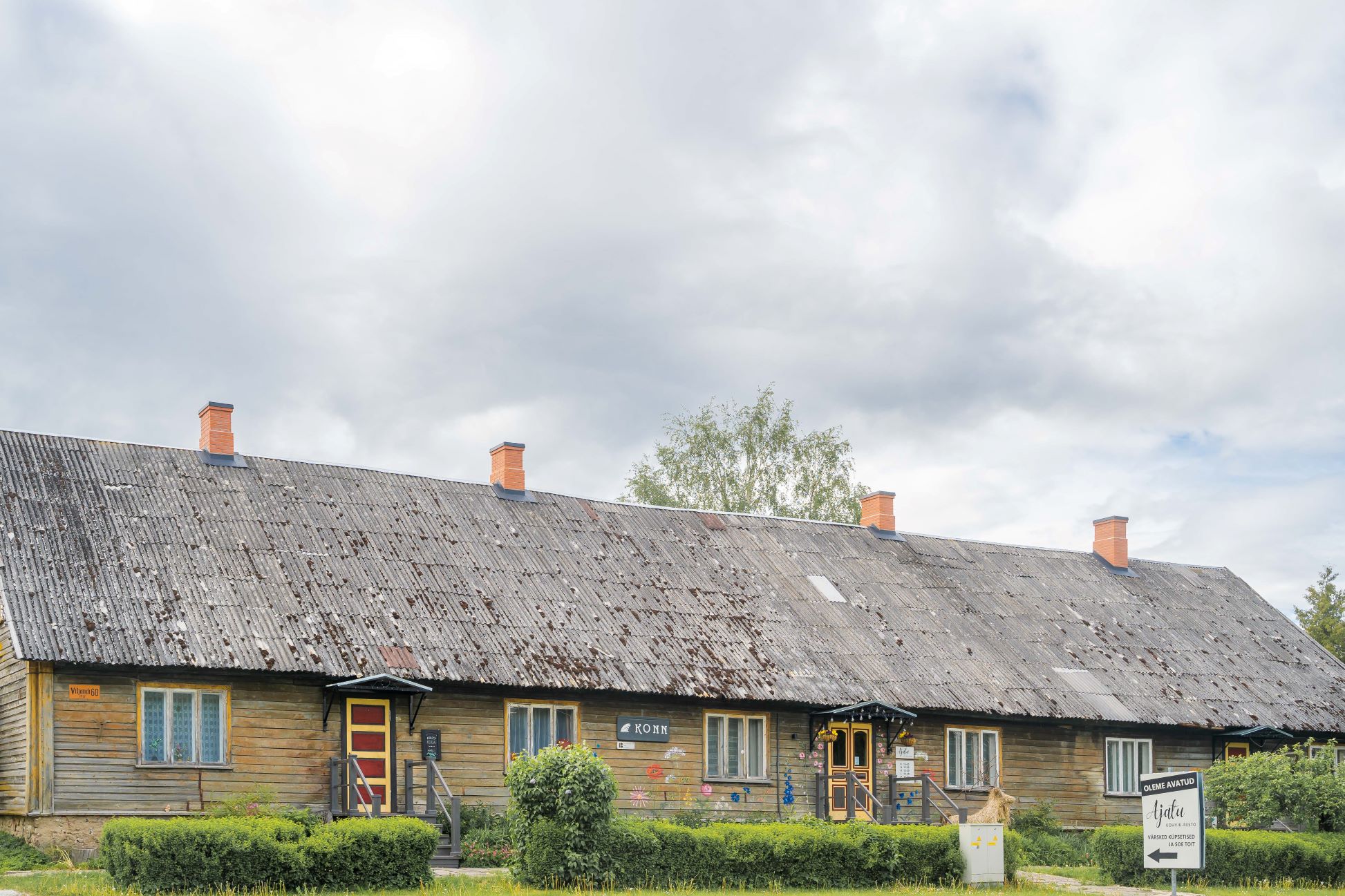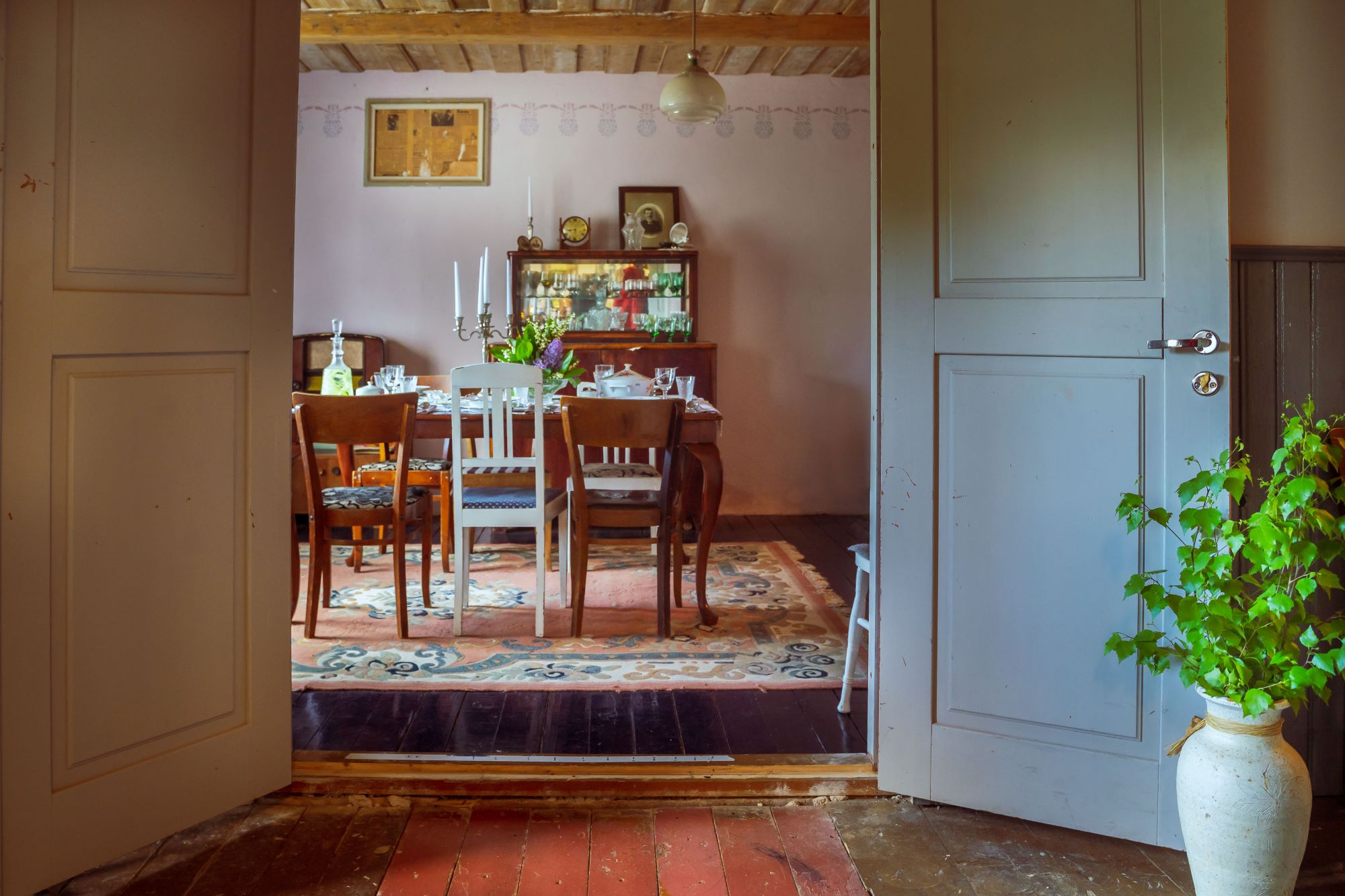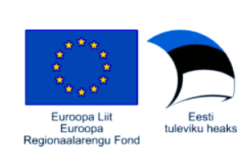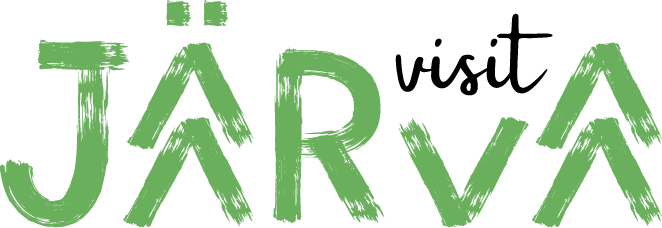There’s no I in the community, but there’s u and there’s unity. Within the past six years, a 150 year- old derelict house in Türi has fully represented the true meaning, the origin of the word community. It also represents the current societal values of sustainability and green living. What was meant to be demolished, has inspired, educated and motivated, introduced and encouraged thousands of people in Estonia and from abroad to fix things rather than to bin them. Through workshops, festivals and being the living example of the sustainable mindset in everything, Konna maja (Frog House) has become a must-visit place, not only because of its old stories, but the new one, telling itself daily through in-house businesses and artists, thriving and inspiring others.

The mentality of demolishing and then building something new, instead of renovating is destructive in its nature, and the approach that only very rare buildings are worth saving, could mean that areas environmentally or culturally valuable, could be lost.
In 2017, in Türi, the former tavern-stable (1860 -1917) turned into a block of 14 flats (since 1917), so a house about 150 years old, commonly seen in many other Estonian small towns, was about to be demolished, but before the heavy machinery was sent to the location – it was asked for the last time – does anyone want this building in a small town, central of Estonia, next to the river Pärnu?
And then – a group of people, united by the passion for stories and old houses, said they would like to recreate the story of this house. Even though the Soviet era hadn’t been kind to the building – the inhabitants had covered the historical riches with the cheapest materials available. They wanted to give it a chance. A non-profit organization Türi Kogukonnaselts MTÜ wanted to prove that renovating old houses is possible. By choosing the building that was like ‘any other’, they made it harder for themselves to apply for fundings, but easier to make it relatable for other communities in Estonia, as so often, buildings given to communities rarely have any real estate value.
And non-profit organizations don’t have many funds available to renovate buildings. So at first it was about volunteer work and funding applications. Although there was no deadline, they understood that for their plans to succeed, they need to engage people and bring in money.
The community around the non-profit organization was very small at first, but from the very beginning they showed they were not only open to other communities, but openly communicated with the state and local press, and therefore gained interest and credibility. They were open to ideas, and they made them work in the environment. It has been called The Community House, from the very beginning, and there sure was unity from the very beginning.
Sustainability is reflected in all its pillars: social sustainability in engaging different generations – from teenagers to grandparents. Also different interest groups, as this place has become a practice base for people interested in renovation. The aim of these community-based activities was to restore (not to rebuild) the building, show off the riches, the old and new. Many courses took place that brought these people together. The house became a book and a workbook at the same time. Lime-plaster, woodwork, log maintenance and restoration, repurposing the materials, re-using planks, etc – it’s all part of environmental sustainability, and by being able to sustain passing on this knowledge to more people, future generations, other areas of sustainability were engaged as well. These workshops became so popular that there were times when participants filled the whole house. Sustainable renovation became more and more popular due to the activities in this very building. Ordinary people became interested in the materials and techniques.
Throughout the years, to engage more people and make these workshops more affordable, multiple funding applications have been submitted, many of them successful.
Financial sustainability is also achieved by creating an environment for artists and businesses to thrive, and the best examples of this are festivals Rohevest and Retrovest, and renting their spaces to a restaurant Ajatu (Timeless), and workshop spaces for artists, crafters, furniture renovation, and others – all aligned with the idea of enabling to sustain that part of the cultural heritage.
They have not left out the Estonian language and local culture. The area was once well-known for frogs hopping around, and even when they were tidying the house from the Soviet-era-additions, they found frogs hopping around in the house. Frog in Estonian is ‘konn’, and a community house is ‘kogukonna maja’, so they named the house Frog’s House in Estonian.
And to be fair, the stories they share to visitors now, to explain the process and to educate people more, are causing shifting jumps for sure.
The greatest asset the community of this non-profit organization has created to this building is the increasing sense of unity. In times where tensions are high due to many other reasons, Estonians need something that brings them together, and this Community House offers a much needed sense of unity. New, smaller communities are formed, based on values and interests, whether these are renovation, gardening, becoming self-sustainable, crafts, old furniture, or preserving food for winter-season.
All these activities have created six new paid jobs, there have been five festivals, more than 150 workshops, and a growing volunteer database, where more than 20 young people have signed up.
Over the six years, NGO Türi Kogukonnaselts has received 25 000 euros from grant applications, and the local municipality has added another 5000 euros to cover self-funding requirements. The greatest input has been the amount of volunteer-hours, and the support from local companies who have helped with materials and machinery.
The first key is open, clear communication. When the nonprofit organization started working with and in this house, they were hoping that the local community would benefit from it, but it went further – due to the open and consistent communication (using modern tools like social media, but also state and local press), this house created a new community, who were all united by their own stories with other old houses, experience they had gathered, and wanted to gather.
Target groups were reached by using communication channels relevant to that age and interest group: Facebook, Instagram and their website tyri.vabakond.ee, also local newspaper Türi Rahvaleht. All communication was delivered based on the age-related social aspects of the target groups.
The second key is people with passion. The core members of the non-profit organization are rather skilled in renovation themselves, but they also invited other experts to lead workshops. Altogether 10 experts in sustainable renovation and environmentally friendly renovation have shared their expertise.
These workshops have brought together almost 1000 people from all over Estonia. With all the passion they had, and compassion towards that old house, this community of DIY’ers, hobby-renovators, professional furniture renovators, crafters, volunteers – they came together the way their ancestors had done for centuries – to work as a community. You can get further by going together. Together they spread the message of a sustainable and eco-friendly approach that is well-suited with the small town mentality of having the community looking after their heritage. Some people, who just planned to attend one workshop, have become active members of the non-profit organization, and therefore the core team. People, who have attended events in this Community House, have come back to invite their own community to come together in this building. The member’s list of the organization, and the community is growing.
The third key is finding their ambassadors, people helping spread the story. The Community House has attracted many artists and also business interests. The thriving artists in the Community House are: Thea’s handcrafts, Apartment 6 craft-studio, Springs Out Furniture renovation, Madli’s Art Studio.
In 2022, a new story was incorporated. Cafe-restaurant Ajatu (Timeless) joined in. Within a year, it gathered a lot of recognition, and people have praised its food and service. Their idea is to mix local, seasonal produce with the historical heritage – their emphasis is on food served during the times of our (great) grandparents. Its interior consists of furniture and dishes donated by the local community.
In 2023, this cafe got recognition in the Nordic White Guide, and it was included in the list of family friendly places to eat. It’s advised to pre-book your table which is very rare among Estonian countryside cafes and restaurants.

This project has many results, but the most important is doing something that hasn’t been done before in Estonia on that scale. Due to the courage of a non-profit organization, a very ordinary house has become an extraordinary place for thousands of people. It offers the sense of unity, essential for every community.
Whereas many community houses serve educational purposes, this non-profit organization has managed to make it self-sustainable by attracting artists, hobby groups, and businesses. In addition to the in-house restaurant, you can rent rooms to hold your seminar, but you can also travel back in time and spend a night in a retro-apartment.
This really is a great example of self-sustainability, combining cultural heritage with the modern approach of festivals.
Two festivals have been brought to life by this community: the third weekend of July is about sustainable living – Rohevest (Greenfest), and Retrovest (Vintage fest) is held in September and dedicated to traditional food and lifestyle.
The core part of both festivals consists of an evening concert, historical tours in the house, lectures and exhibitions.
The non-profit organization behind these activities has been acknowledged by the local council, but also on governmental level. The head of the organization, Aili Avi was recognized by the Estonian President due to her work related to this building and building this community.
It’s important to have a vision, but it’s essential to keep the flexibility and nourish ideas coming from the community. The Community House (Kogukonna maja), or a Frog House if we use a literal translation, is a great example of how to take action based on your core values, and create a strong foundation for the sustainable mindset. They have surely done it in Türi, and spread it elsewhere – KONN has come to stay as a tourist destination, it has become one of the must-visit places. It’s unique, filled with stories and supported by the community. More than 8000 people have participated in the events and visited this house over the six years.
Photos: Silver Köster
The production of the stories of “Imetledes Järvamaad” is supported by:

